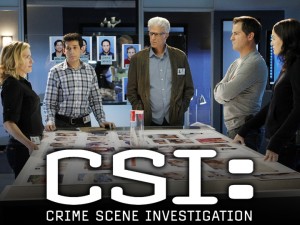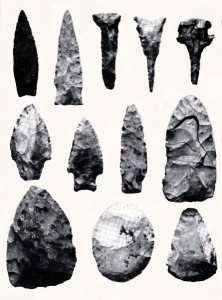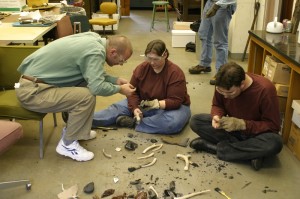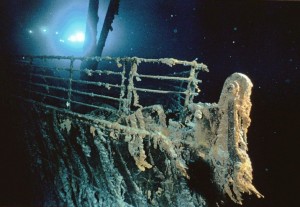There is a natural human fascination with mysteries, crimes and murders. Just look at how many shows dealing with these topics exist on television. While it’s fascinating to watch these actors “solve” ridiculously twisted mysteries that have been conjured up for the audience’s amusement, what is truly impressive is being able to do this without writers and with only one picture of the crime scene. What Dr. Beisaw demonstrated was more than simple entertainment; it showed just how useful archaeology is in today’s world.
Archaeology can be about more than locating and dating pottery from the long gone past. The techniques and methods of archaeology can be applied to many situations to help explain something we don’t understand or don’t have an exact record of. (Even with a record it’s important to check facts and keep bias and left-out facts in mind.) If, from the smallest fragment of a plate an archaeologist can tell you many things about the culture of the people who likely used it, then just imagine what an archaeologist could do with the details of an everyday mystery.
What makes an archaeologist so fit to understand the unexplained is their ability to draw information from the placement of an artifact and to learn from what the purpose of an artifact is and what it represents in a culture.
In the case of the crime scene photo Dr. Beisaw analyzed, she was able to learn the most about the victim not from his fingerprints or DNA analysis, but from the objects around his room. She could almost certainly place the month and year of the murder by noticing which magazine issues were present. She knew the victim was a young man likely in, or just out of high school by a certificate near his dresser and from child-like objects still on his wall. She knew it would likely have been uncomfortable to sit at the desk in his room due to the awkward height of the chair. His shoes were poised in a manner that suggests this young man was caught while getting ready to leave. She knew that during this era it was likely for families to rent out rooms when their children left so the victim may not be the young man who once lived in this room. And she knew he met his fate by being struck from behind due to the positioning of his body.

Documenting a crime scene is actually very reminiscent of documenting an archaeology site. There are a lot of parallels between these sciences.
At first glance, most people wouldn’t notice these details and draw these conclusions. We usually leave actually solving the mystery to the police or the detectives in our TV shows while we sit back and relax. But you don’t need to have police training and experience to see the truth of the mystery for yourself—you just need an eye trained for details and the knowledge of how to use those details to come to a greater understanding of what is in front of you.
Links to images:
Image 1: http://tvlistings.zap2it.com/tv/csi-crime-scene-investigation/photo-gallery-detail/EP00380341/1386676489
Image 2: http://guncrisis.org/category/press-releases/page/2/




